|
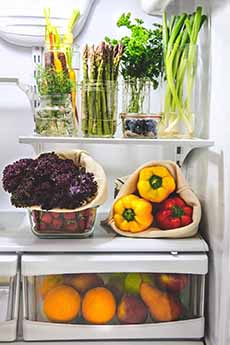
[1] What goes into the fridge: the crisper drawer and on the shelves (photos 1 to 3 © Good Eggs).
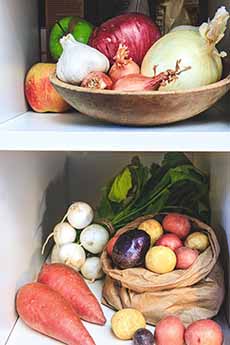
[2] What goes into the pantry.
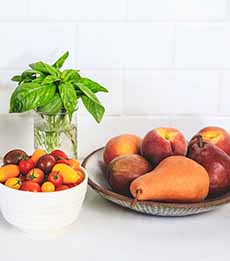
[3] What goes on the countertop.

[4] Radishes go into the high humidity crisper drawer (photo © Amber Engle | Unsplash).

[5] Cauliflower goes into the high humidity crisper drawer (photo © Jennifer Schmidt | Unsplash).
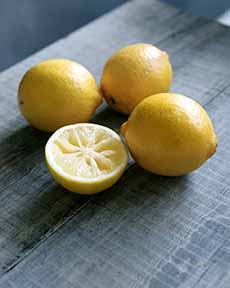
[6] Lemons and limes go into the low humidity crisper drawer (photo © Caroline Attwood | Unsplash).
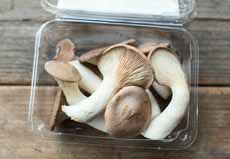
[7] Store mushrooms on refrigerator shelves (photo of king trumpet mushrooms © Good Eggs).
|
|
Properly stored produce cuts down on food waste and wasted money. These tips from Good Eggs will keep your fruits and veggies fresher, longer.
Note that this is just a summary.
Read the full article here. It provides tips for how you should wrap each item before placing it in the fridge.
Download an infographic to keep on your fridge.
GENERAL TIPS TO STORE FRUITS & VEGETABLES
Don’ts
DON’T wash fruits and vegetables until you’re ready to use them. Washing removes natural protective barriers and introduces moisture, which encourages the growth of bacteria and mold.
DON’T feel pressured to wrap fruits and vegetables in plastic. Biodegradable bags are better because they’re more breathable. Check out reusable beeswax wraps too.
DON’T put everything in your fridge. Nnot all fruits and vegetables need to be refrigerated. See the “Counter” section below.
Do’s
DO remove greens from root vegetables like carrots, radishes, and beets. But don’t throw those greens out: You can use them in sautés and pestos.
DO remove any fasteners, like twisty ties or rubber bands. Let that produce breathe!
DO store fruits and vegetables separately, since many fruits emit ethylene gas as they ripen, which will cause other produce in close proximity to spoil faster.
WHERE TO STORE FRUITS & VEGETABLES
The choices are refrigerator, pantry and countertop.
Refrigerator
The crisper drawers at the bottom of the fridge are made to store fruits and vegetables. If your fridge has controls that let you open and close the crisper vents that help manage humidity and the effects of ethylene gas:
Open one set of vents all the way to increase airflow and create create a low-humidity environment.
Keep the other set of vents closed to create a high-humidity drawer.
Here’s what goes in each part of the fridge.
Low Humidity Crisper Drawer
Low humidity slows ripening, while the open vent allows ethylene gas to escape before it spoils the produce you keep there.
Apples
Lemons and limes
High Humidity Crisper Drawer
Asparagus
Beets and radishes
Broccoli and cauliflower
Brussels sprouts
Carrots
Celery
Fennel
Green onions, ramps, scallions, spring onions
Hard herbs: chives, oregano, rosemary, sage, thyme
Tropical fruits: cherimoyas, kiwis, mangoes, pineapples, ripened at room temperature
Turnips and leafy greens
Sunchokes
Zucchini and summer squash
Refrigerator Shelves
Berries: blackberries, blueberries, raspberries, strawberries
Cherries
Mushrooms
Peppers
Soft herbs: cilantro, dill, mint, parsley, tarragon
Countertop
Avocados
Bananas
Basil: with roots in a glass of water
Cucumbers
Eggplant
Melons (barely ripened; into the fridge when ripe)
Oranges and grapefruit
Pears
Persimmons
Stone fruits: apricots, nectarines, peaches, plums
Tomatoes: ripened
Pantry
Garlic, onions, shallots
Pomegranates
Potatoes and sweet potatoes
Winter squash
FRUITS & VEGETABLES STORAGE SUMMARY

|







